“You can call me Scarlett”—and other idiots; plus Q&A with Professor Ludditus, and more
I really didn’t want to waste my time with COVID-19 anymore, but life forced me to. New facts, and possibly new opinions. A darker future, too! The real pandemic is a stupidity one.
§1. “I’m Doctor Li-Meng Yan, you can call me Scarlett.”
No, no, no! Wait on, I’m sick of all the Chinese who pretend to be George, Mike, Sue or whatnot. Same for the Indians who answer your call, “Hi, I’m George, how can I help you?”, when he’s Manju, Ganesh, Rajiv, or Rishi. So find a diminutive if your name is difficult to a Westerner, but stop claiming to be George or Scarlett, dammit!
Dr. Li-Meng “Scarlett” Yan (Yan is the family name) is a strange creature or, as per Wikipedia,
a Chinese virologist, known for publications and interviews alleging that SARS-CoV-2 was made in a Chinese government laboratory. These publications have been widely criticised by the scientific community. In April 2020, she fled to the United States.
…
Between September 2020 and March 2021, Yan authored a series of four preprint research papers, wherein she argued that SARS-CoV-2 did not emerge naturally in a “spillover from animals,” but rather was produced in a laboratory.
…
Yan’s preprint was promoted by the Rule of Law Society, a political organisation affiliated with Steve Bannon, former Trump strategist, and Guo Wengui, an expatriate Chinese billionaire, in November 2018. The organisation’s stated intent was to investigate “Chinese corruption and financially support victims of the regime.” The Rule of Law Society had not previously published scientific or medical research. Yan previously appeared on Bannon’s “War Room” podcast. The lack of financial disclosure in Yan’s papers was described as a lapse in ethical transparency by Dr. Adam Lauring, particularly when publishing “what are essentially conspiracy theories that are not founded in fact”.
In November 2020, The New York Times reported that Yan’s “trajectory was carefully crafted” by Steve Bannon and Guo Wengui, who played to rising anti-Chinese sentiments, with the goal of bringing down China’s government and distracting from the Trump administration’s handling of the COVID-19 pandemic. The Times article pointed out that Guo and Bannon arranged for Yan to fly first class to the United States, arranged lodging, coached her on media appearances, and arranged interviews for her with conservative media hosts such as Lou Dobbs and Tucker Carlson.
This Wikipedia page might have been written by the Chinese Communist Party, but how can you trust such claims from “Scarlett” (from her Twitter)?
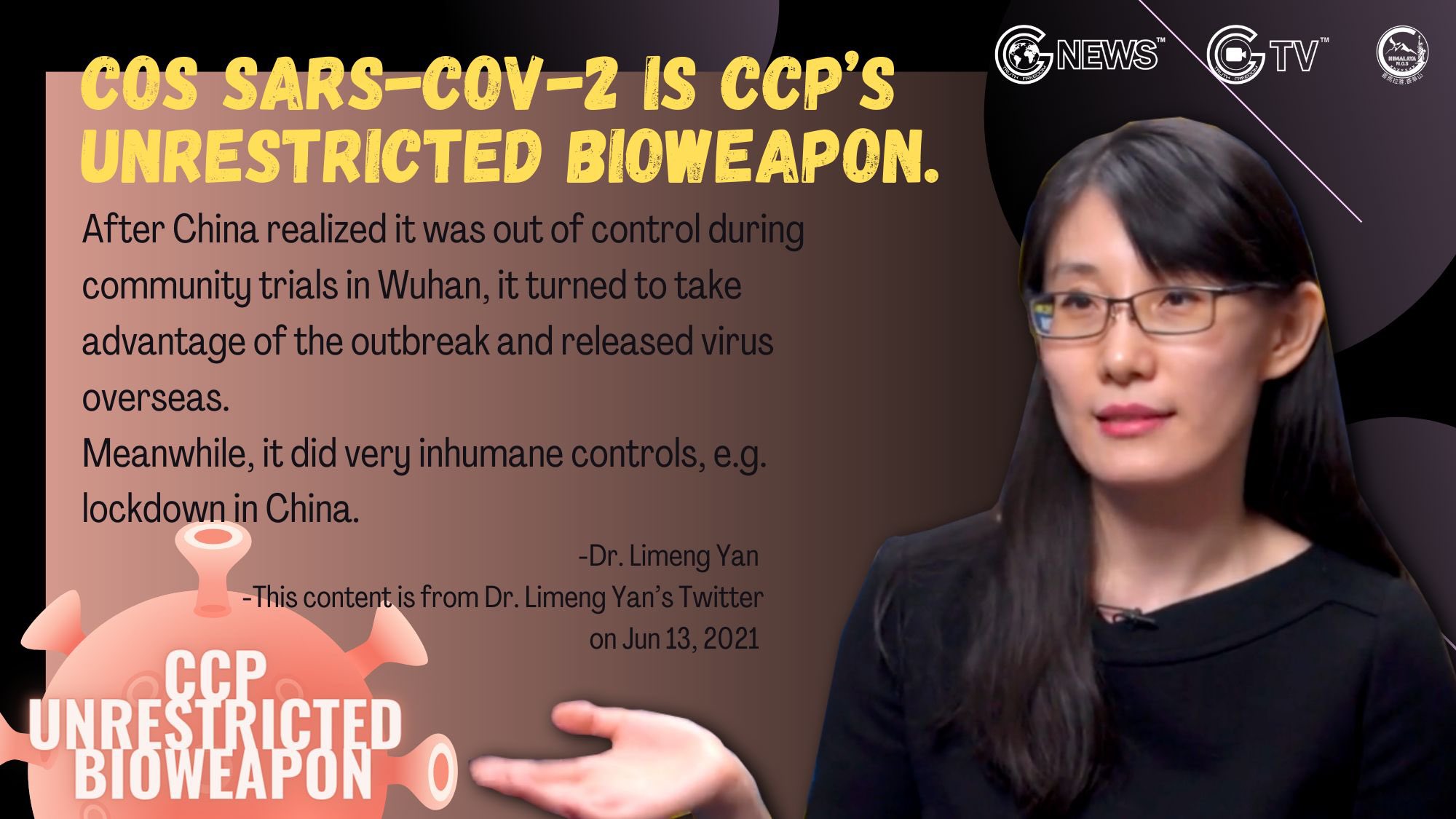
Yes, I do believe that’s highly likely that SARS-CoV-2 (2019-nCoV) originates by a lab in Wuhan, but I believe the release to be accidental. I also remember that the powers that be tried to label such theories as “fake news” before granting us the right to believe in them, possibly for a short time, as the number of the articles blaming the bats alone seems to be increasing again. But this person is too much. She’s as fake as a $7 bill, and someone tries to make a sort of Navalny out of her (not that he would have any real relevance; he’s a Western construct as well).
Her first major appearance with Tucker Carlson, on July 10, 2020: EXCLUSIVE: Chinese virologist accuses Beijing of coronavirus cover-up, flees Hong Kong: ‘I know how they treat whistleblowers’:
She’sa piece of dung, this shithead of a woman. “You can call me Scarlett.” “I deliver the message of the truth of COVID-19.” “This is about whether all the human (sic!*) in the world can survive.” (*There are no plurals in Chinese.) As for the fake FB account set up by the CCP to denigrate her, it seems to have been deleted, but this Li-Meng has an obsession with FB; here’s FOUR FB accounts with the same header as her Twitter account: limeng.yan.31, limeng.yan.75, id=100065428383087, and id=100058162363097; and THREE more accounts that have no posts: id=100068610950026, id=100065263182602, and id=100065164057723. I don’t question the campaign against Li-Meng, as I know China is capable of the most stupid propaganda campaigns; I just notice that I don’t trust Li-Meng either.
Funny enough, her advice for dealing with the virus includes measures such as: social distancing (“two meters is better”), 70° alcohol (140 proof for Americans), and mask wearing (surgical masks)! How could then Tucker Carlson insist that masks are totally useless and “child abuse”?!
When it wasn’t “legal” to believe in Wuhan’s leak, her claims were debunked, e.g. on September 16, 2020, by Politifact: Tucker Carlson guest airs debunked conspiracy theory that COVID-19 was created in a lab; on February 12, 2021, in WaPo: Scientists said claims about China creating the coronavirus were misleading. They went viral anyway.
And yet, after her previous “activity” in 2020, she enjoys sort of a revival this summer, and Tucker Carlson has hosted her at least one more time.
From the revival: June 05, 2021: Chinese Virologist Says Dr Fauci Emails Prove Her Wuhan Lab Leak Claims; June 30, 2021: Chinese whistleblower exposes COVID-19’s origins on ‘Tucker Carlson Today’. As if everything were new (which maybe it was for most people, given the previous censorship), we’re told the same theory about her:
Prior to her escape from China in April of 2020, Yan claimed that her husband attempted to “harm” her in a variety of ways, including poisoning, in order to stop her from fleeing the country.
Yan, who was working at a World Health Organization reference lab in Hong Kong during the onset of the pandemic, was assigned as a secret investigator to probe COVID-19, which was being called the “Wuhan pneumonia” at the time. However, she said she was warned by her supervisor, Dr. Leo Poon, not to ask too many questions.
She was told not to touch the “red-line” or else face the consequences from the CCP.
…
Yan determined, in her opinion, that COVID-19 was a biologically engineered weapon that got out of control, designed by the Chinese military after they learned of its effectiveness during the first SARS outbreak.
This virus was a prime candidate to turn into a biological weapon, but the CCP first needed to test the virus on a small sample group in order to determine how to best utilize it against the world.
Yan was shocked to discover that the testing site was Wuhan. China was allegedly testing on its own people.
…
“They test it in Wuhan. It gets out of control. They didn’t expect that to happen,” she said. “At that point, they realize, OK, it’s out. They lied about that. But then, they intentionally allowed some huge number of people, some infected, from Wuhan to travel around the world to infect the rest of the world.”
In order to insulate themselves from the damage inflicted on other countries, China enacted a military-style shutdown of the country, a far cry from the lockdowns seen in the U.S.
“The lockdown in China is totally different as happened in the U.S.,” Yan said. “They just lockdown you in your room and lock your room. And then you can be hungry, die at home, which happened in Wuhan at that time.”
First of all, one has to be the utmost idiot to believe that this virus escaped while it was tested against “a small sample group” in Wuhan! Only a shithead could issue such a statement! Even a retard would understand that “a small group” on which such a virus is tested must be in the middle of nowhere, not in a busy city of 11M people! (If at all, of course, as this hypothesis is totally unsubstantiated.)
Second, people were not dying of hunger during the lockdown in Wuhan. It was atrociously severe that lockdown, but I’ve read reports from people being there in Wuhan: Brits, Frenchmen, Americans. As expected, some people died because their other medical conditions couldn’t be treated, or they died of COVID-19 and its complications, but the shopping and the delivery of the food and other essential products was decently regulated: in some buildings people were allowed to get out once or twice a week, in others the packages were delivered to the front gate, and generally, everyone was involved in maintaining the situation relatively bearable. That was a fully enforced lockdown, unlike the stupid measures taken in the West. Too bad it was too late to be of help to the world outside Wuhan.
You’re shit stupid, Scarlett, and a pathological liar.
§2. DS James Hathaway, the other day (his IQ seems to be decreasing)
Awkward question.
But if the vaccines and the masks and the lockdowns and distancing and self isolation and the nhs app going mental and the school closures and the double masking during copulation and the cancellation of summer hols really work…
Why are cases rising? 😬
— Laurence Fox ✌🏼🇬🇧✌🏼 (@LozzaFox) July 16, 2021
It’s so rare for a person to be able to articulate the nuts and bolts of the heart with such ease. @thecoastguy makes my heart sing. @GBNEWS pic.twitter.com/rKj7gntSmX
— Laurence Fox ✌🏼🇬🇧✌🏼 (@LozzaFox) July 17, 2021
The above monologue by Neil Oliver can be read here. The abject part of it is this one:
Most recently I have been hearing it said that the wearing of a mask, even after so-called Freedom Day, will be an act of compassion. Compassion. The message is that compassionate people will wear masks for the sake of others who feel frightened by unmasked people.
What about compassion for people whose mental health has been eroded by the very wearing of masks?
What about those for whom the absence of faces and their replacement by the legion of the masked has been profoundly troubling?
Why does compassion only cut one way?
What I’m saying is – wear a mask if you want to, but allow for those that can’t bear to wear one a moment longer.
Compassion is a two-way street, after all.
For me it beggar’s belief that the millions are being told they should cover their faces, as much as possible, and, as far as anyone might reasonably predict, forever.
Ours is a species that reads the faces of others in order to be a functioning part of the group.
We do it consciously and unconsciously. We read countless cues from one another that tell us how to behave. We live peaceably among the crowds because we can tell with the merest of glances at another’s face, how that other person is likely to behave towards us.
This is why we have so many references to faces in the language we use every day: face up to it … put a brave face on it … face the music … face facts … face the truth … I just can’t face him today … as plain as the nose on your face … face to face … say it to her face … on and on, countless acknowledgments that our faces reveal the truth of us, even when we would rather they didn’t.
I have found the sea of masks close to unbearable myself. I have watched my children in their masks and felt that I have let them down, somehow.
Well, I have a message for such mass murderers:
1. I, TOO, AM SICK OF WEARING A FACE MASK!
2. You’re too stupid to understand why we’re doing it.
3. You don’t understand the meaning of compassion.
4. Any random Japanese is much more considerate and compassionate than any fucking retard of you!
Here’s an explanation for the Japanese part: go watch Paolo de Guzman’s video Why Japanese Don’t Like Foreigners. It’s from 2019, and therefore it has nothing to do with COVID-19. The very first reason? The foreigners don’t wear a face mask when they are sick! What does that mean? It means that a Japanese who feels ill, even if they only have a cough or the tendency to sneeze, use a face mask when in public, to prevent the infection of other people! That’s what compassion is, but it’s not compassion, it’s RESPECT FOR THE OTHERS and for the society as a whole! Such a feeling is not known in Europe and in North America, eh?

A Japanese couldn’t possibly question the face masks during COVID-19, because they were already using them for a long time already! The only difference is that with COVID-19, you might not know that you are sick, and that’s why we’re all bound to wear them in public!
We need to stop trying to destroy Lord Covid. He has been here for far longer than we have and knows all the tricks of the trade. We should instead learn to live again with all the freedom we had before. We cannot defeat nature. She is laughing at us.
This is a bad flu. Wake up.
— Laurence Fox ✌🏼🇬🇧✌🏼 (@LozzaFox) July 16, 2021
If this is just a bad flu, the vaccines are just some bad flu vaccines. I never heard people opposing so much a flu vaccine. 💉
— Ludditus ex-Béranger (@ludditus) July 16, 2021
From the SAGE horses mouth.
Vaccination drives mutation.
You couldn’t make this crap up.
Which is a massive worry in itself. https://t.co/rmU7v96Zap
— Laurence Fox ✌🏼🇬🇧✌🏼 (@LozzaFox) July 18, 2021
DS James Hathaway is an idiot here. The fact that a number of people in the medical profession don’t understand how vaccines work and how mutations appear and survive is not an excuse to spread fake news under the cover of freedom of speach. https://t.co/aSquWwGspQ
— Ludditus ex-Béranger (@ludditus) July 18, 2021
The last one truly deserves some attention. Notwithstanding the fact that not all pathogens are mutating that fast, the idiotic belief that vaccines are causing mutations denies all logic, especially the many decades of mass vaccination against various infectious diseases.
It’s a theory encountered e.g. at Dr. Geert Vanden Bossche (previously discussed here, chapter THIRTY), at Dr. Peter McCullough (discussed here), and at some other imbeciles. The quick summary I liked on how the vaccines DO NOT create new mutations:
- Vaccines don’t promote mutations, in fact, they reduce the chances that a new variant could emerge.
- Selective pressure (=evolutionary pressure) does not cause mutations! It simply selects which pre-existing mutations spread. The way to suppress the emergence of new COVID-19variants is to reduce the number of cases and thus the number of mutations.
Further reading:
- Feb. 18, 2020: We shouldn’t worry when a virus mutates during disease outbreaks
- Feb. 5, 2021: The coronavirus is mutating—but what determines how quickly?
Yes, we’re now having an entire Greek alphabet to fear, but it’s not caused by the vaccines!
When DS James Hathaway spreads such shit, this questions the very opportunity of a better protection of the free speech, a movement strongly supported by our man:
This pandemic has revealed that freedom of speech, in the context of the social networks and of other means by which the false and dangerous sayings of any retard can instantly reach hundreds of millions of other retards, can lead to catastrophic effects. It has also revealed that even highly educated people can prove to be retards! Let’s fight for the right to be killed not by the stupidity of our rulers, but by the stupidity of YouTube, TikTok, and generally by the unverified information that’s spread by no matter what moron believes to have understood “everything that’s behind it”!
Of course, being just a case of bad flu, DS James Hathaway is also supporting other initiatives:
“The other is to recognise defeat and allow their populations to live with Covid-19 – just as humanity had learned to live with worse pathogens for centuries before governments embarked on their current unprecedented and ill-advised experiment.” https://t.co/UKs0qeaXOr
— Laurence Fox ✌🏼🇬🇧✌🏼 (@LozzaFox) July 19, 2021
This doesn’t mean that the fact that Boris Johnson had to self-isolate on the very Freedom Day isn’t ridiculous.
§3. Random old news
But then, the Chinese authorities say unvaccinated parents can’t send children to school. More cities including Beijing begin to vaccinate minors aged 12 to 17. In some areas of China, the unvaccinated are being banned from schools, hospitals, and public transport.
Back to “our” Delta variant, Professor Daniel M Altmann from the Department of Immunology and Inflammation at the Imperial College, London, believes that
It is very important to progress with the vaccine roll-out at a very high pace. At this stage it becomes crucial that the second vaccination dose is administered within the minimum authorised interval from the first dose, to speed up the rate at which vulnerable individuals become protected.
Also,
Regarding mandatory vaccination, mandatory requirements can be highly effective for certain groups such as healthcare workers, although other strategies may be sufficient or more advisable. Any potentially negative effects of such policies need to be carefully considered.
You’ve just declared war on your own people. https://t.co/ztbxTgKMro
— Laurence Fox ✌🏼🇬🇧✌🏼 (@LozzaFox) July 19, 2021
§4. The damper (le bémol, comme disent les Français)
I expect many people to enjoy this point of view published on July 5, 2021, by the British Medical Journal: Time to assume that health research is fraudulent until proven otherwise?
Health research is based on trust. Health professionals and journal editors reading the results of a clinical trial assume that the trial happened and that the results were honestly reported. But about 20% of the time, said Ben Mol, professor of obstetrics and gynaecology at Monash Health, they would be wrong. As I’ve been concerned about research fraud for 40 years, I wasn’t that surprised as many would be by this figure, but it led me to think that the time may have come to stop assuming that research actually happened and is honestly reported, and assume that the research is fraudulent until there is some evidence to support it having happened and been honestly reported. The Cochrane Collaboration, which purveys “trusted information,” has now taken a step in that direction.
…
Mol, like Roberts, has conducted systematic reviews only to realise that most of the trials included either were zombie trials that were fatally flawed or were untrustworthy. What, he asked, is the scale of the problem? Although retractions are increasing, only about 0.04% of biomedical studies have been retracted, suggesting the problem is small. But the anaesthetist John Carlisle analysed 526 trials submitted to Anaesthesia and found that 73 (14%) had false data, and 43 (8%) he categorised as zombie. When he was able to examine individual patient data in 153 studies, 67 (44%) had untrustworthy data and 40 (26%) were zombie trials. Many of the trials came from the same countries (Egypt, China, India, Iran, Japan, South Korea, and Turkey), and when John Ioannidis, a professor at Stanford University, examined individual patient data from trials submitted from those countries to Anaesthesia during a year he found that many were false: 100% (7/7) in Egypt; 75% (3/ 4) in Iran; 54% (7/13) in India; 46% (22/48) in China; 40% (2/5) in Turkey; 25% (5/20) in South Korea; and 18% (2/11) in Japan. Most of the trials were zombies. Ioannidis concluded that there are hundreds of thousands of zombie trials published from those countries alone.
Others have found similar results, and Mol’s best guess is that about 20% of trials are false. Very few of these papers are retracted.
…
Research fraud is often viewed as a problem of “bad apples,” but Barbara K Redman, who spoke at the webinar insists that it is not a problem of bad apples but bad barrels if not, she said, of rotten forests or orchards. In her book Research Misconduct Policy in Biomedicine: Beyond the Bad-Apple Approach she argues that research misconduct is a systems problem—the system provides incentives to publish fraudulent research and does not have adequate regulatory processes. Researchers progress by publishing research, and because the publication system is built on trust and peer review is not designed to detect fraud it is easy to publish fraudulent research. The business model of journals and publishers depends on publishing, preferably lots of studies as cheaply as possible. They have little incentive to check for fraud and a positive disincentive to experience reputational damage—and possibly legal risk—from retracting studies. Funders, universities, and other research institutions similarly have incentives to fund and publish studies and disincentives to make a fuss about fraudulent research they may have funded or had undertaken in their institution—perhaps by one of their star researchers. Regulators often lack the legal standing and the resources to respond to what is clearly extensive fraud, recognising that proving a study to be fraudulent (as opposed to suspecting it of being fraudulent) is a skilled, complex, and time consuming process. Another problem is that research is increasingly international with participants from many institutions in many countries: who then takes on the unenviable task of investigating fraud? Science really needs global governance.
Everybody gains from the publication game, concluded Roberts, apart from the patients who suffer from being given treatments based on fraudulent data.
Somewhat related: July 19, 2021: Ivermectin COVID-19 Scandal Shows How Vulnerable Science Is to Fraud:
Haruko Obokata published two papers in January 2014 that described how regular blood cells could be turned into pluripotent stem cells.
At the time, this was a coup – it dramatically simplified a previously complicated process and opened up new vistas of medical and biological research, while neatly sidestepping the bioethical considerations of using human embryos to harvest stem cells.
…
Within a few days, scientists noticed some of the images in the paper were irregular. And a broader skepticism began. Could it really be that simple?
As the experiments were simple and the biologists were curious, attempts to replicate the papers’ findings began immediately. They failed. By February, Obokata’s institute had launched an investigation. By March, some of the paper’s co-authors were disavowing the methods. By July, the papers were retracted.
…
Which brings us neatly to ivermectin, an anti-parasitic drug trialed as a treatment for COVID-19 after lab-bench studies early in 2020 showed it was potentially beneficial.
It rose in popularity sharply after a published-then-withdrawn analysis by the Surgisphere group showed a huge reduction in death rates for people who take it, triggering a massive wave of use for the drug across the globe.
More recently, the evidence for ivermectin’s efficacy relied very substantially on a single piece of research, which was preprinted (that is, published without peer review) in November 2020.
This study, drawn from a large cohort of patients and reporting a strong treatment effect, was popular: read over 100,000 times, cited by dozens of academic papers, and included in at least two meta-analytic models that showed ivermectin to be, as the authors claimed, a “wonder drug” for COVID-19.
It is no exaggeration to say that this one paper caused thousands if not millions of people to get ivermectin to treat and/or prevent COVID-19.
A few days ago, the study was retracted amid accusations of fraud and plagiarism. A masters student who had been assigned to read the paper as part of his degree noticed that the entire introduction appeared to be copied from earlier scientific papers, and further analysis revealed that the study’s datasheet posted online by the authors contained obvious irregularities.
…
No-one spent the 5 minutes required to download the data file that the authors had uploaded online and notice that it reported numerous deaths happening before the study had even begun. No one copy-and-pasted phrases from the introduction into Google, which is all it takes to notice just how much of it is identical to already-published papers.
This inattention and inaction perpetuated the saga – when we remain studiously disinterested in the problem, we also don’t know how much scientific fraud there is, or where it can be readily located or identified, and
This isn’t news, actually. The reproducibility crisis was already known for some time:
A 2016 poll of 1,500 scientists conducted by Nature reported that 70% of them had failed to reproduce at least one other scientist’s experiment (including 87% of chemists, 77% of biologists, 69% of physicists and engineers, 67% of medical researchers, 64% of earth and environmental scientists, and 62% of all others), while 50% had failed to reproduce one of their own experiments, and less than 20% had ever been contacted by another researcher unable to reproduce their work. Only a minority had ever attempted to publish a replication, and while 24% had been able to publish a successful replication, only 13% had published a failed replication, and several respondents that had published failed replications noted that editors and reviewers demanded that they play down comparisons with the original studies.
In 2009, 2% of scientists admitted to falsifying studies at least once and 14% admitted to personally knowing someone who did. Such misconduct was, according to one study, reported more frequently by medical researchers than by others.
March 12, 2018: Is science really facing a reproducibility crisis, and do we need it to?
I couldn’t find the study I remember as having said that 74% of the published studies weren’t reproducible. All I could find was this study published on August 30, 2005: John P. A. Ioannidis, Why Most Published Research Findings Are False. This study has been summarily discussed here and, more recently, in David Spiegelhalter, in his 2019 book The Art of Statistics: How to Learn from Data (UK Edition; US Edition):
The ‘Reproducibility Crisis’
Chapter 10 explored John Ioannidis’s notorious 2005 claim that most published research findings were false, and since then many other researchers have argued that there is a fundamental lack of reliability in the published scientific literature. Scientists have failed to replicate studies done by their peers, suggesting that the original studies are not as trustworthy as previously thought. Although initially focused on medicine and biology, these accusations have since spread to psychology and other social sciences, although the actual percentage of claims that are either exaggerated or false is contested.
Ioannadis’s original claim was based on a theoretical model, but an alternative approach is to take past studies and try to replicate them, in the sense of conducting similar experiments and seeing if similar results are observed. The Reproducibility Project was a major collaboration in which 100 psychological studies were repeated with larger sample sizes, and so had higher power to detect a true effect if it existed. The project revealed that whereas 97% of the original studies had statistically significant results, only 36% of the replications did. [Open Science Collaboration, ‘Estimating the Reproducibility of Psychological Science’, Science 349:6251 (28 August 2015), aac4716.]
Unfortunately, this was widely reported as implying that the remaining 63% of ‘significant’ studies were false claims, but this falls into the trap of making a strict division between studies that are either significant or not-significant. Distinguished US statistician and blogger Andrew Gelman has pointed out that ‘the difference between “significant” and “not significant” is not itself statistically significant’. In fact only 23% of original and replication studies had results that were significantly different from each other, which is perhaps a more appropriate estimate of the proportion of the original studies with exaggerated or false claims.
Rather than thinking in terms of significant or not-significant as determining a ‘discovery’, it would be better to focus on the sizes of the estimated effects. The Reproducibility Project found that replication effects were on average in the same direction as the original studies, but were around half their magnitude. This points to an important bias in the scientific literature: a study which has found something ‘big’, at least some of which is likely to have been luck, is likely to lead to a prominent publication. In an analogy to regression to the mean, this might be termed ‘regression to the null’, where early exaggerated estimates of effects later decrease in magnitude towards the null hypothesis.
The claimed reproducibility crisis is a complex issue, rooted in the excessive pressure put on researchers to make ‘discoveries’ and publish their results in prestigious scientific journals, all of which is crucially dependent on finding statistically significant results. No single institution or profession is to blame. We have also showed when discussing hypothesis testing that, even if statistical practice were perfect, the rarity of true and substantial effects means a substantial proportion of results that are claimed to be ‘significant’ are inevitably going to be false-positives (Figure 10.5). But, as we now see, statistical practice is often far from perfect.
I would also point you to my quick classification of the studies, especially as in the current COVID-19 pandemic, most studies are retrospective cohort studies, usually post-factum observational cohort studies, which determine some correlation and nothing more. (I prefer to call them “Microsoft Excel studies.”)
It’s very difficult to trust any study these days. I was already skeptical in the past, given the abundance of contradicting studies that decided today that “aspirin is good to your health” and tomorrow that “aspirin is bad to your health”; or that “drinking coffee is unhealthy,” only to come later with the contrary: “drinking coffee is good!” I grew sick of such fake studies, being them 20% or 70% of all the published ones!

§5. Q&A with Professor Ludditus
🙋 Why are the COVID-19 cases increasing in the most vaccinated country in the world?
In Israel too there are idiots like everywhere else. People who can’t live without holidays in the Greek or Spanish islands or generally in another country (Israelis went to Turkey), even if they’re drooling fools who can only afford a single pair of pants. Another cause is that this is a form of a cold virus, so the vaccine lasts for only so long. We have no rock-solid solution. In the next waves without major restrictions (the populace won’t accept them anymore), what will happen is what needs to happen: EVERYONE will get the virus, 10% or however many have to die will die, and that’s it.
🙋 But I still don’t trust their vaccines. Why should I get the jab then? I could even die!
What you don’t want to understand is that if this Chinese virus is going to be with us forever, it will constantly mutate (just like any rhinovirus or coronavirus that give the common cold), and we will get it in countless forms over and over again, so it’s better to first familiarize the body with a form of it through vaccination. You will get this virus anyway! The problem with this virus “engineered in Wuhan” is that it differs too much from those known to your body’s immune system. That’s why it initially killed so many people in Lombardy. Maybe those who were supposed to die have already died, or maybe not, nobody could tell yet. But you will get the virus, rest assured of that.
The belief I’ve formed is this: those who have experienced severe issues from the COVID vaccines would also have had similar problems from the virus. And they will most likely have a bad time from future mutations as well. The additives in these vaccines are less harmful than those in other vaccines, but other vaccines didn’t enjoy such global coverage of their adverse reactions. Some adverse reactions, even the fatal ones, are the same as the complications given by the disease itself, so it’s basically a reaction to the virus, not something else. The mRNA vaccines contain information for a form of SARS-CoV-2, the AstraZeneca vaccine contains a chimpanzee cold virus modified (“grafted”) to resemble a form of SARS-CoV-2. Both types educate the body to react to viruses of this type. If the reaction sucks badly for some people, I’m firmly convinced that the consequences of catching “this bad flu” would (or will!) be worse than from the vaccine for those people (except, of course, for those who have already died after getting the jab).
However, regarding the post-vaccine deaths, being them related to developing myocarditis or pericarditis, cerebral venous thrombosis (CVT) or portal vein thrombosis (PVT), let’s realize that no one is counting those who die after regular colds, should there be unexpected complications. If someone drops dead in the street, nobody would remember like, “oh, one or two weeks ago he was coughing a bit, and sneezing too, but it only lasted for two days”! While with this mass vaccination for COVID-19, everything correlated to the vaccination is counted against it.
I should also remind people that Guillain-Barré, the syndrome associated with J&J’s vaccine, is also associated with COVID-19.
Those saying “it’s just a bad flu” should know that “a bad flu” can lead in some people to severe bilateral pneumonia followed by death. I know of someone who was about 52 at the time, and who died “of flu” in the ICU after a number of cardiac arrests following pneumonia with cardiac complications from the flu he had caught. He was not counted as “dead from flu,” but as dead of cardiorespiratory arrest, although, as with COVID, without the flu and its complications, he wouldn’t have died!
I understand that these vaccines are made “on the fly,” and that we have discovered there are problems with them (are they really from these vaccines, or would they have occurred with any cold vaccine if mass vaccination against the cold had occurred? It’s impossible to know), but I don’t understand how those who say “it’s just a bad flu” are so outraged against a vaccine that “it’s just a bad flu vaccine”! If they’re not afraid of “a bad flu,” then why are they afraid of a vaccine against “a bad flu”?
Unlike AstraZeneca, where the risk of major reactions is after 6-20 days, with mRNA they say the first 72 hours after the booster jab are prone to are fever, muscle aches, weakness, dizziness. Well, I took both doses of Pfizer, and I had absolutely no reactions whatsoever! (A slight feeling at the injection site, but that’s with other injections too. And even for those made in the ass, some are more painful than others.) Was I luckier than others? I have no idea. I don’t know if fever and muscle aches plus weakness and dizziness occur in 10% or 50% of mRNA vaccinated people, but I think that the less than 0.01% (100 in a million) people who had severe reactions to the vaccine, and the few who died, overshadowed those who didn’t have any adverse reaction of any importance. The flu death rate is 9 per million overall, or 34 per million over 65, and nobody makes much fuss about it, like “let’s look for a flu treatment, not for a flu vaccine!” There is no cure for the flu, they only treat the complications, like pneumonia, pericarditis, etc. You can die from heart inflammation even as a complication from an infected tooth, for example.
🙋 Why is there only talk of vaccines and not of drug treatments for COVID-19? I would happily take HCQ + Azithromycin on any given day.
First reason, Big Pharma: Because they don’t want cheap drugs to ruin their market.
Second reason: Because HCQ+AZY, if allowed on a mass scale, would only work in the early stages of the disease. I also believe in HCQ taken preventatively, like against malaria, to already be in the system beforehand and prevent a cytokine storm. For patients in a severe condition, only expensive meds would help, like antivirals with plasma with steroids etc. etc., and the degree in which they that help is not guaranteed. There are several treatment protocols, BUT there are several of them because none are guaranteed, and there CANNOT be enough of those drugs if tens of millions get sick at once!
🙋 A hastily made vaccine is not the miracle solution, so why do they keep talking ONLY about the vaccine and not about other treatments? I know we can’t expect a perfect vaccine, but an insufficiently tested vaccine applied on a large scale to the entire population worries me.
Because the general solution is NOT the treatment, that’s why there is vaccination e.g. for measles, hepatitis, polio, etc.
Because the possible treatments are non-specific, like for colds and flu. They treat the complications of a cold or of a flu. My opinion is that HCQ works in the sense of avoiding the excess of cytokines that makes your lungs destroy themselves, but it does not avoid “simple” pneumonia or other complications that can occur in colds and flu. Sure, this is where AZY helps, but nothing is certain.
🙋 Why does an idiot like Macron come and threaten the population with forced vaccination? I don’t understand the excessive concern of all the governments of the planet for vaccination? I would understand them if they said they have a drug treatment option and people can choose between them… but for them, the concern is about vaccination; for me, it’s a false concern.
Forced vaccination exists for measles, hepatitis, polio and others. It’s not the forcing that’s the problem WITH CONTAGIOUS DISEASES, when vaccination is not for your sake, but for the sake of the community. If that’s the case, then forcing seatbelts is much more dictatorial, because without seatbelts only you would die, not others! (Drunk driving kills others. Lacking a seatbelt only kills that person.) Are they protesting against compulsory seatbelt wearing?
The vaccine is basically the best solution. If we look at e.g. polio, which is not really treatable, it is the ONLY solution. Hepatitis is treatable, but are you sure you want to get hepatitis? You’re left with a scarred liver for life, just like some people are left with reduced lung capacity for life after having had COVID.
The real problem is not forced vaccination, but the questionable testing, validation and approval of the existing vaccines. But what could be done about that?
🙋 I am very much in favor of voluntary vaccination; whoever wants it, should get it, whoever doesn’t, should be left alone and not categorized as a stupid. Just as I don’t have a problem with those who vaccinate, I don’t understand why they have a problem with those who don’t vaccinate. The vaccinated ones can also get COVID-19 and therefore they can spread the disease further and nobody judges them for that; the unvaccinated ones are called idiots–in my opinion the idiot is the one who thinks he can impose his will (e.g. Macron) to the entire population!
Nope. The equivalent of herd immunity is best achieved by immunization through mass vaccination.
Voluntary vaccination has no epidemiological effect on contagious diseases. Period. It does not extinguish an epidemic. Full stop.
Vaccinated people spread the disease less than the non-vaccinated, especially as they usually get rid of it faster. It’s the same with everything else people get vaccinated against, measles or whatnot; who says one can’t be contagious for at least a few hours on the first day of getting a virus? I believe they are. But with 99.99% vaccinated against measles, it practically doesn’t exist anymore. In areas with measles vaccination deficiencies, it has reappeared. But with about 70% vaccinated, it generally hasn’t claimed victims among the vaccinated.
🙋 But the polio and hepatitis vaccines have been tested for decades, and we’ve all had them. In contrast, the COVID-19 vaccines will be tested on the population–that’s why I’m not for them, at least for now; maybe in 5-10 years I would!
We are not discussing reliability, safety and testing, but epidemiological and practical PRINCIPLES, i.e. what vaccines do and how they work against an epidemic.
The polio vaccine was administered in the US even when it was not that safe; some manufacturers made batches that crippled people (read about some failures, from manufacturing Dr. Salk’s anti-polio to Sanofi’s Dengue vaccine in section SEVEN here).
Some interesting extra reading:
- History of Anti-vaccination Movements
- The History of the Lyme Disease Vaccine
- Anti-vaxxers Think This Is Their Moment
🙋 I don’t understand why we have to be so divided as a society because of vaccines and COVID-19 in general, after all we all have personal opinions, we are not experts, and we CANNOT give a definitive verdict in any such medical investigation like the origin of the virus and the effectiveness of COVID-19 medical treatments.
The answer is in the question. People are shit stupid, they don’t bother to try to understand more, to read and get some real knowledge on the matter, yet they spread their shit on all possible social networks!
That’s what you get when you cross freedom of speech, stupidity, intellectual laziness and the power of the social networks.
🙋 Theoretically, I agree with you, except that the severity of a disease like polio does not bear comparison with COVID-19. That’s why I think that now the worldwide vaccination is not the right solution. And it’s not even feasible. Let’s say you have high vaccination rates in the US and Europe, but what about the rest of the world? How can you eradicate a pandemic when 50-75% of the planet’s population doesn’t even have access to the vaccine?
Unlike in the times when the polio used to strike unexpectedly, we’re now less willing to accept death as part of our lives. We want everything to be predictable (which of course is an impossibility), and we think of unexpected deaths that could have been prevented as something from the Middle Ages. Not everyone fully believes in science, but they believe in technology (except, apparently, in 5G and mRNA).
On the other hand, when the Americans were first getting polio shots, were the Indians having access to such a vaccine? I much doubt it. This didn’t prevent the US from going on with the vaccine.
Of course, back then they didn’t fly so much, they didn’t all take foreign holidays, etc. If this pandemic will mark the end of the civilization as we know it, it’ll be of our own doing. Maybe not all people should be treated as being equal: it’s all because of the retards who simply cannot help but make their holidays thousands of miles away, because of the retards who really need to fly half the planet for some stupid business reason or because they’re Indian, but they live in Britain, and because of the young retards who never observe any rule, who need to go to the pub, to the club, and the like.
But we will eradicate something in the end: either the pandemic, or our civilization.

§6. Bolsonaro, YouTube and the HCQ
I am angry. Bolsonaro is a complete idiot in so many respects (religion, abortion, forests, etc.), but I’m angry about this: YouTube pulls Bolsonaro videos over COVID misinformation. The censorship reasons, as reported by Reuters:
“Our rules do not allow content that states that hydroxychloroquine and/or ivermectin are effective in treating or preventing COVID-19, that states there is a cure for the disease, or says that masks do not work to prevent the spread of the virus,” [YouTube] said in a statement.
Umm… There are several problems here:
- I still believe in the usefulness of the HCQ, and it’s a harmless belief, as nobody pretended it would prevent anything but malaria. When the first linked article (Axios) declared the HCQ “proven to not work as a COVID-19 treatment,” they linked to an article stating that Hydroxychloroquine failed to prevent coronavirus infections, which is a totally different issue. They mix things so badly, yet they have the last saying in such matters?!
- HCQ, as Didier Raoult said, should be administered in/from the very early stages of the infection, otherwise it’s useless! It’s easy to make a study saying it doesn’t work if you administer HCQ to patients with destroyed lungs! But HCQ’s only effect is to prevent the cytokine storm that makes your body destroy your lungs! If you take it preventatively, it’s not to prevent getting COVID-19, but to prevent the cytokine storm! Some people are too stupid to understand that simple fact.
- Even if it’s useless, it’s harmless for more than 90% of the population. 2 billion people have taken chloroquine or hydroxychloroquine in the last 80 years! The anti-inflammatory effects of the HCQ are used e.g. in rheumatoid arthritis. The way it prevents your body to destroy itself is used in some autoimmune diseases such as lupus. It’s not uncharted territory! The problem with the HCQ is that they practically forbade people to get it! If they feared people would overdose it, they should know that some people are so stupid that they’d do the most unimaginable things, but it’s dictatorial to impose the “anti-moron” laws and regulations on everyone! (That’s true with most OTC drugs that got prescription-only or that got discontinued in the last 3-4 decades.)
- Yes, I just said that we’re doomed because all kinds of idiots are saying all kind of crap on the social networks, but if an idiot like Bolsonaro is allowed to rule over such a huge country and to destroy it economically and socially, our last worry should be that he likes the HCQ! OK, the ivermectin sucks, but censorship sucks too. If Bolsonaro says that God exists and God created the Universe, why isn’t this removed from YouTube? There is no proof that God exists and that it did such a thing!
Fuck censorship.
§7. Sky News Australia gets the Bolsonaro treatment
August 1: Sky News Australia banned from YouTube for seven days over Covid misinformation:
We apply our policies equally for everyone regardless of uploader, and in accordance with these policies and our long-standing strikes system, removed videos from and issued a strike to Sky News Australia’s channel.
Specifically, we don’t allow content that denies the existence of Covid-19 or that encourages people to use hydroxychloroquine or ivermectin to treat or prevent the virus. We do allow for videos that have sufficient countervailing context, which the violative videos did not provide.
Well, one cannot “prevent the virus” 🙂 An infection, maybe.
As much as Sky News Australia was constantly broadcasting shit, this kind of censorship is not the right thing to handle the issue.

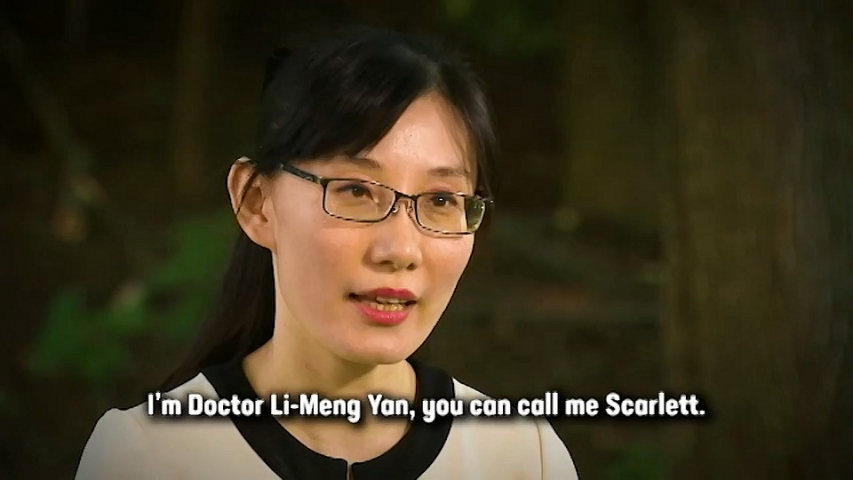
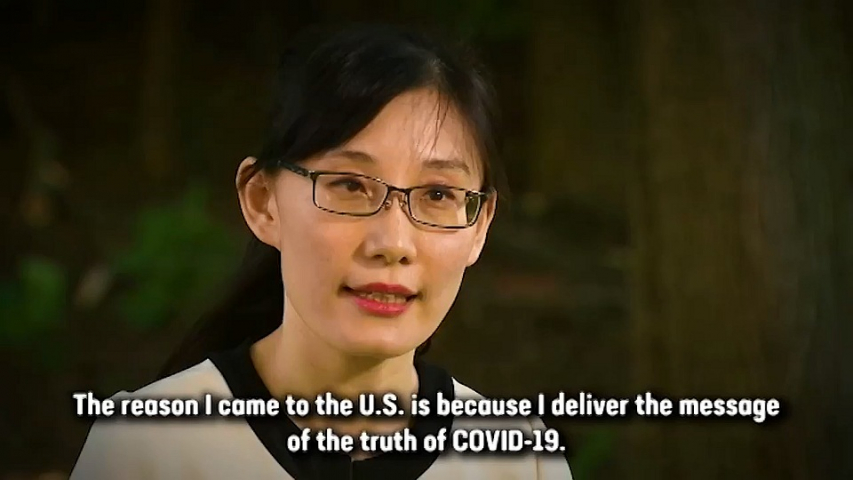

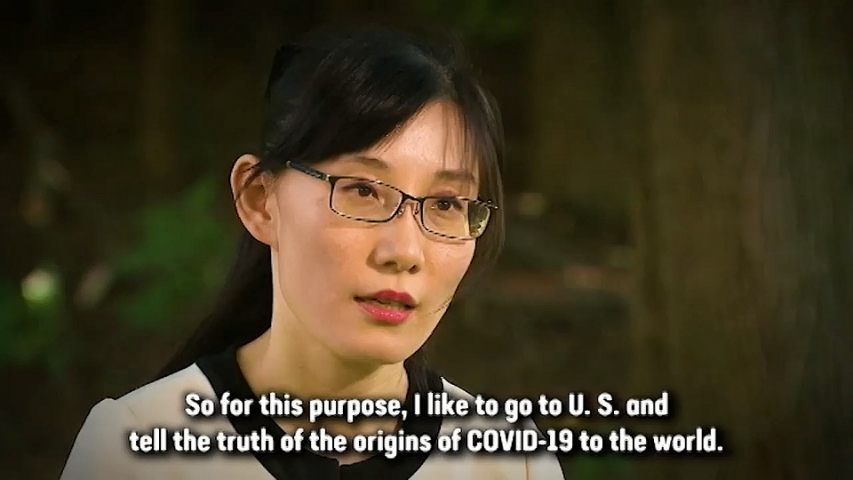
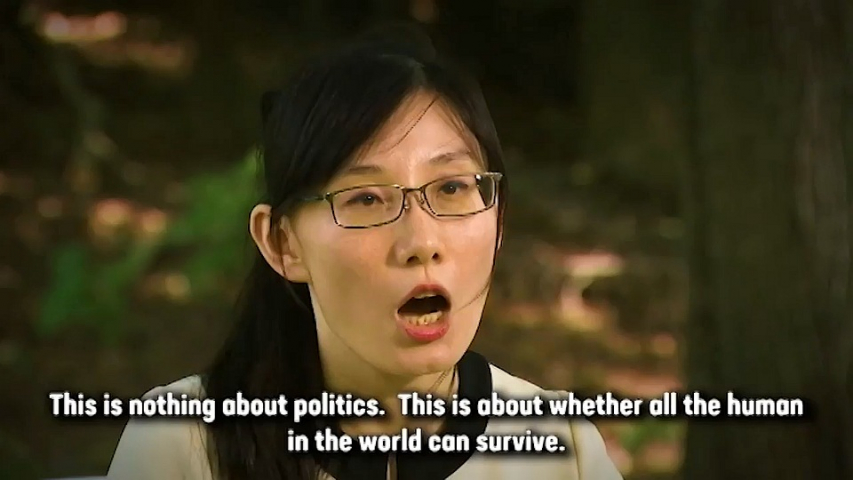
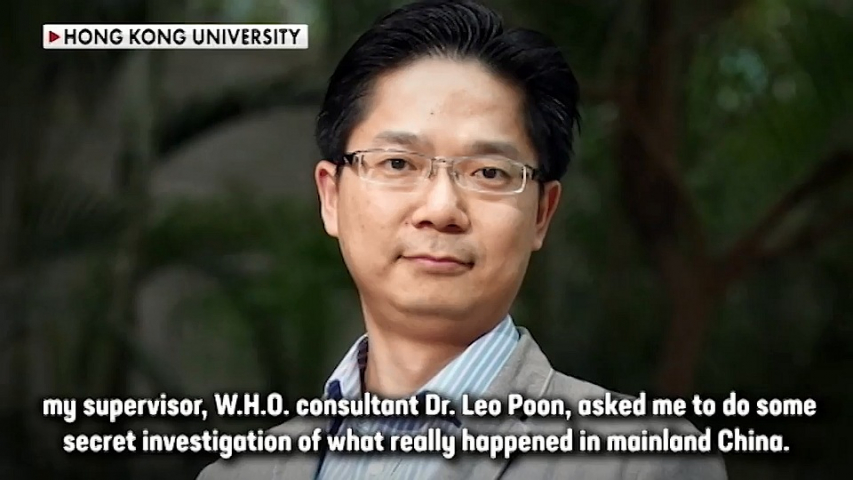
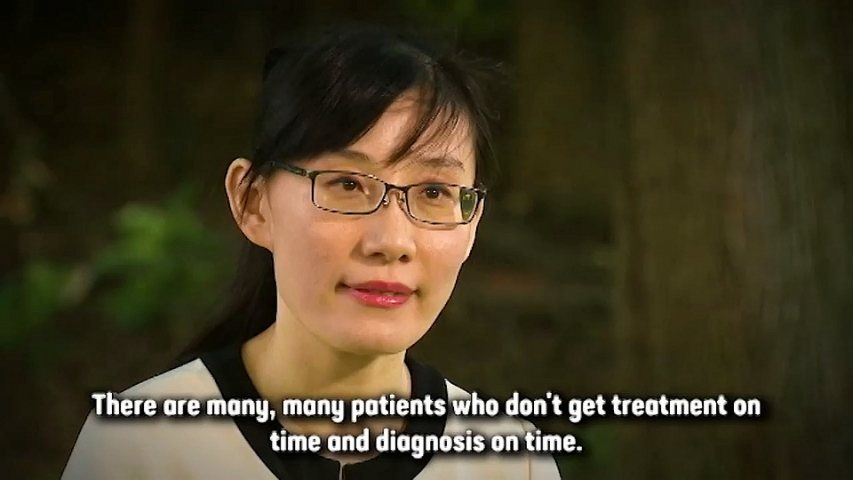
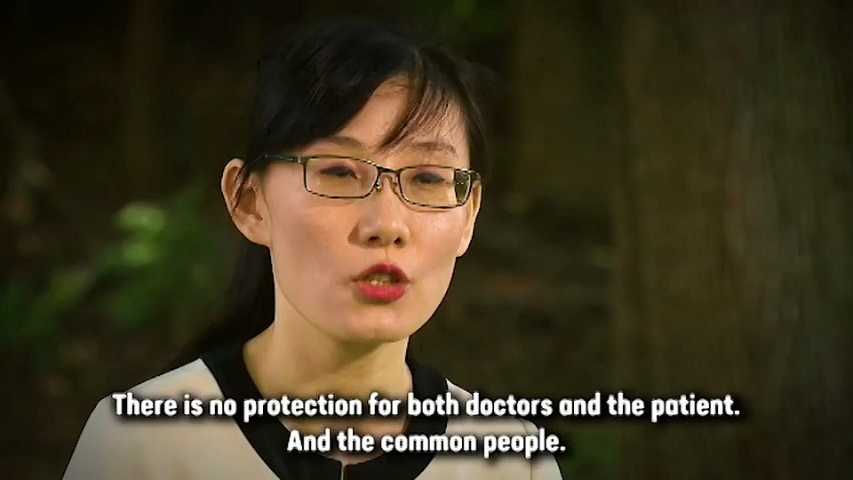
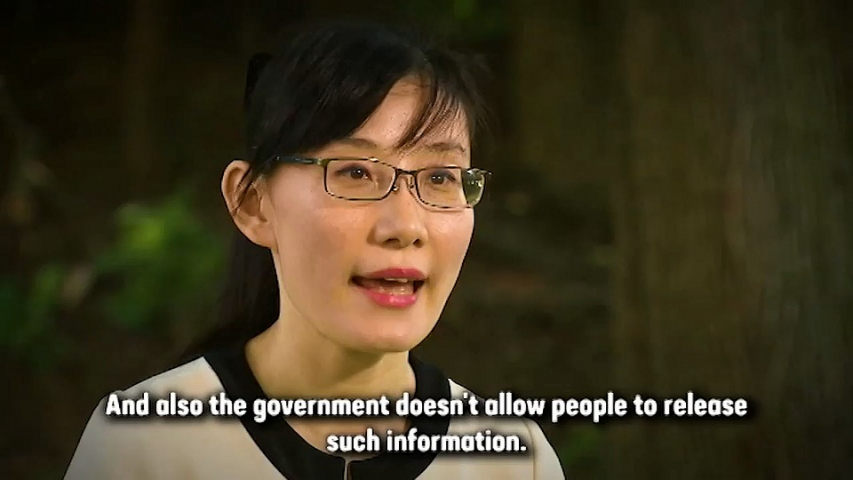
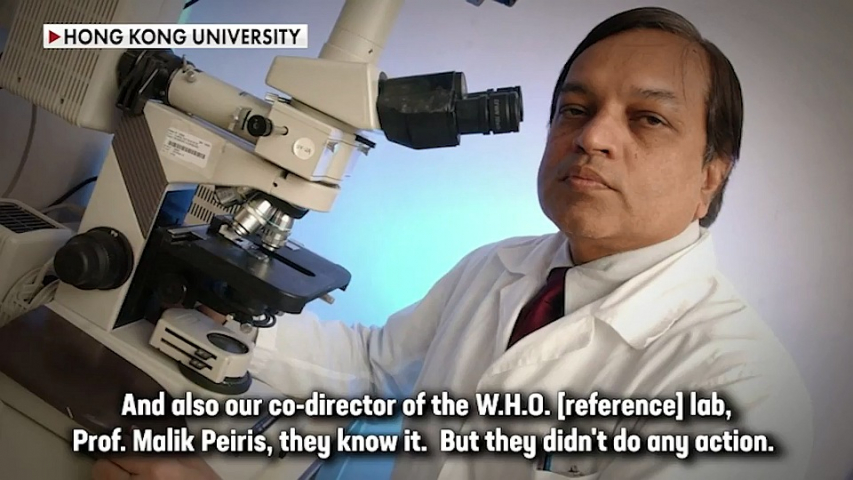
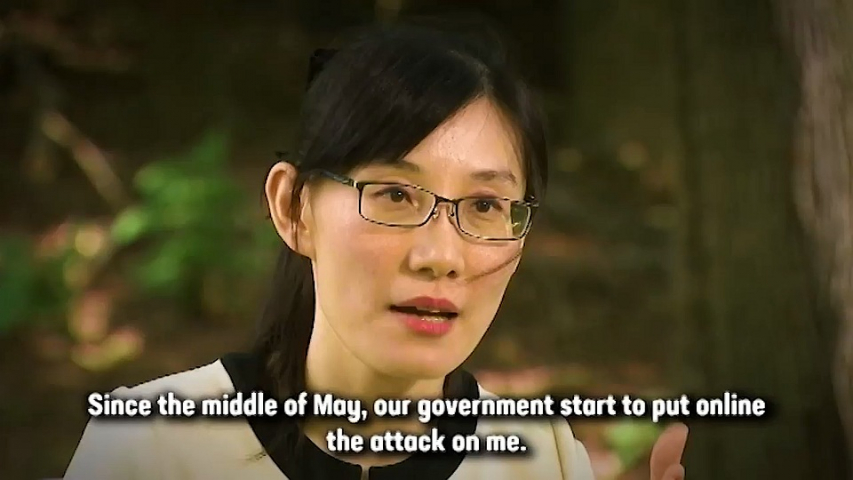
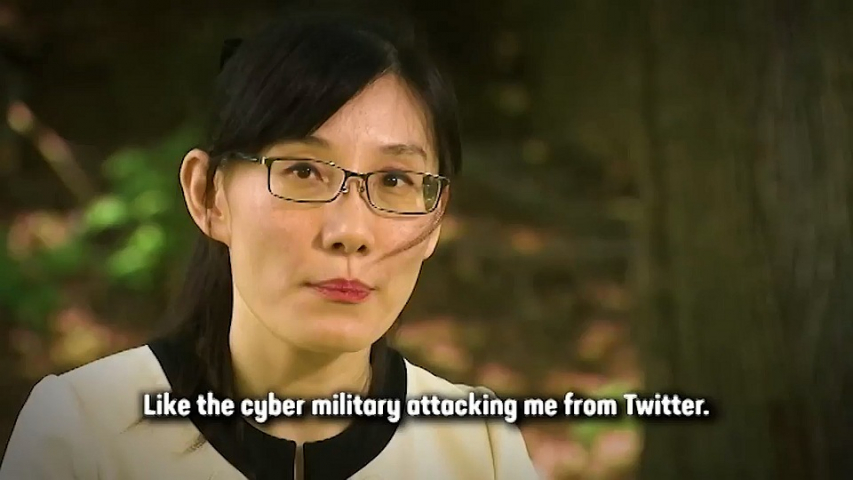
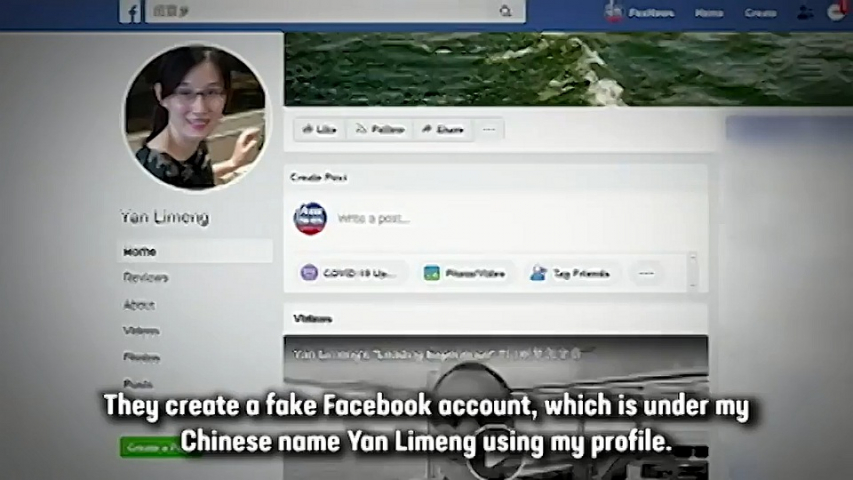
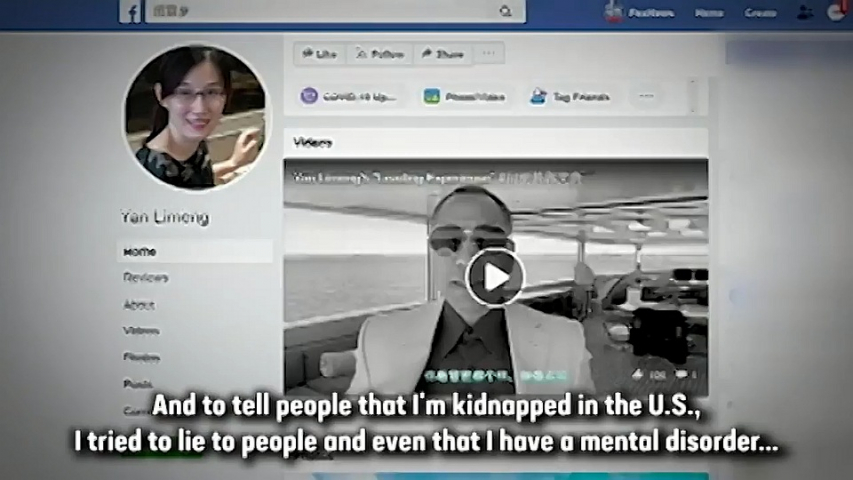
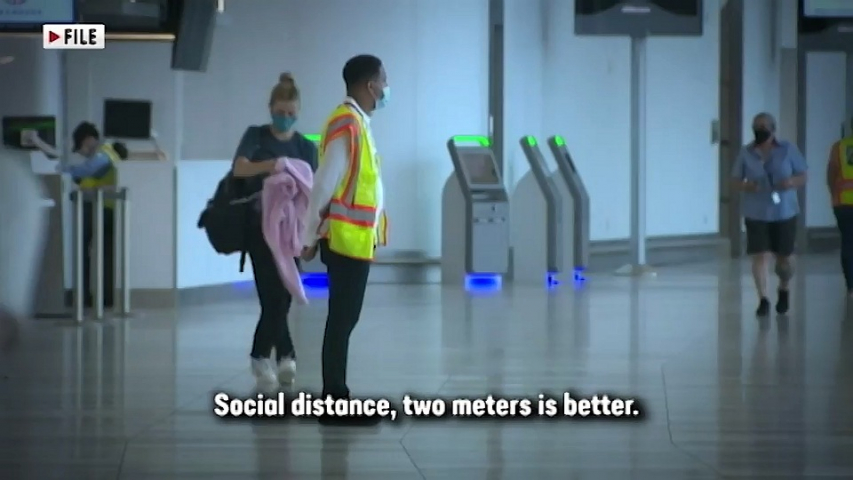
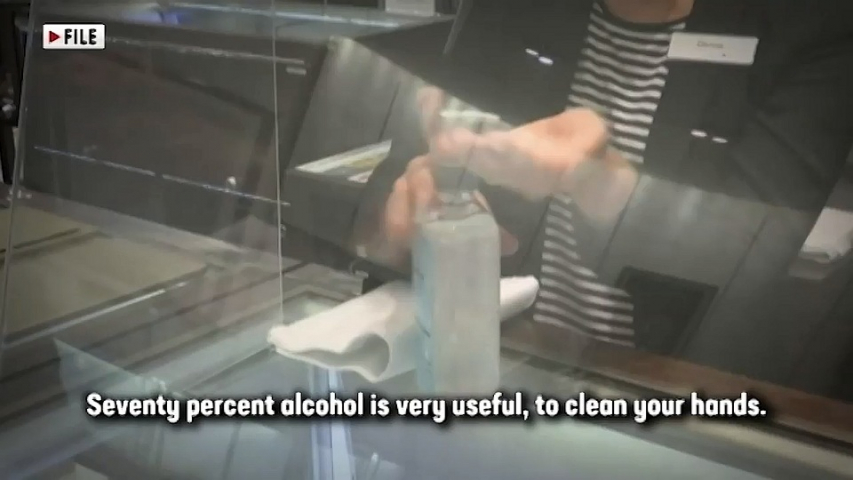
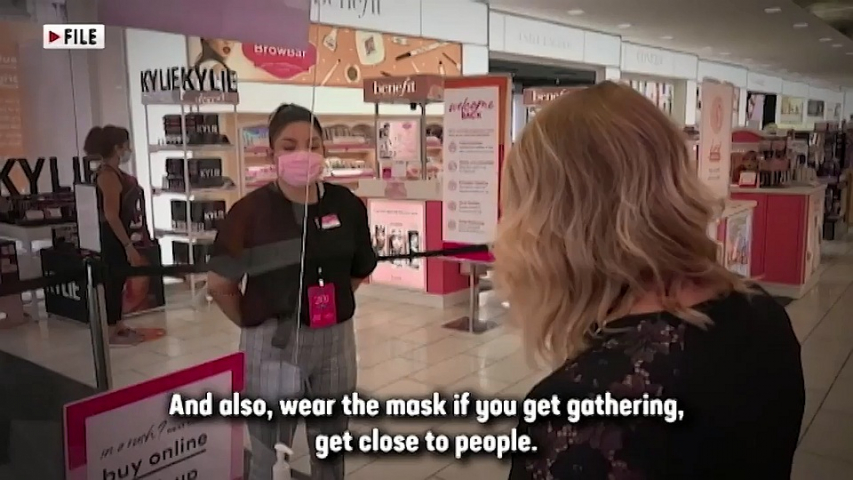
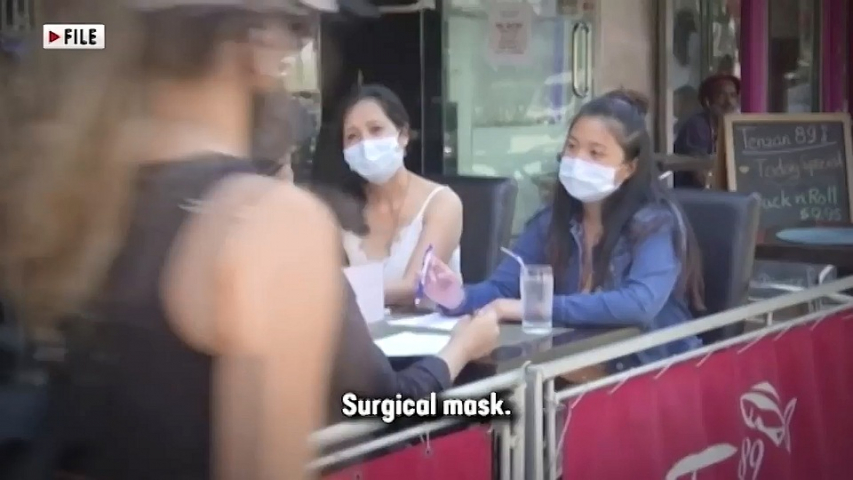
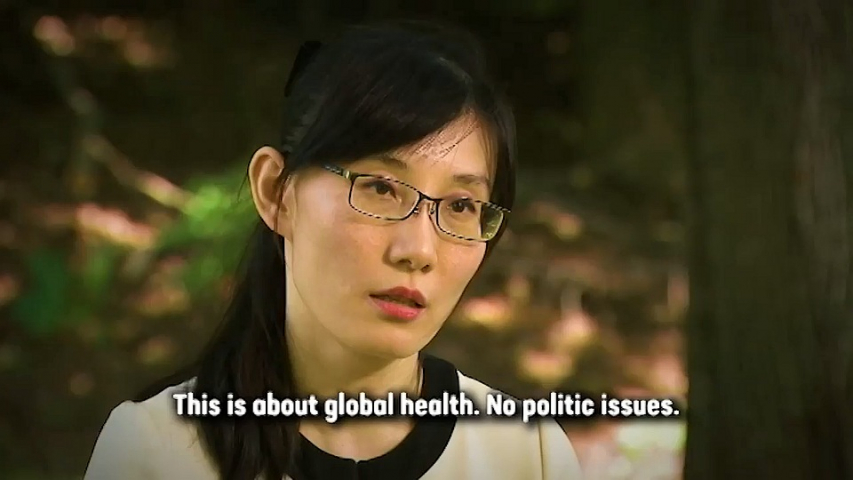
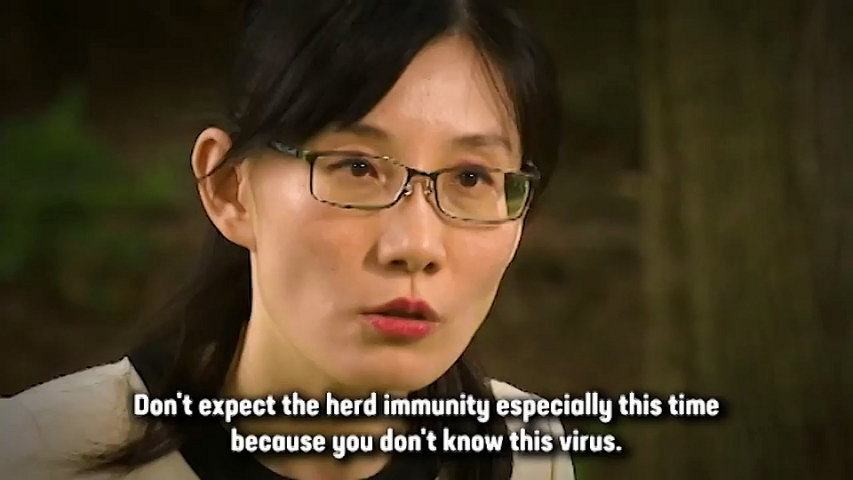
Leave a Reply